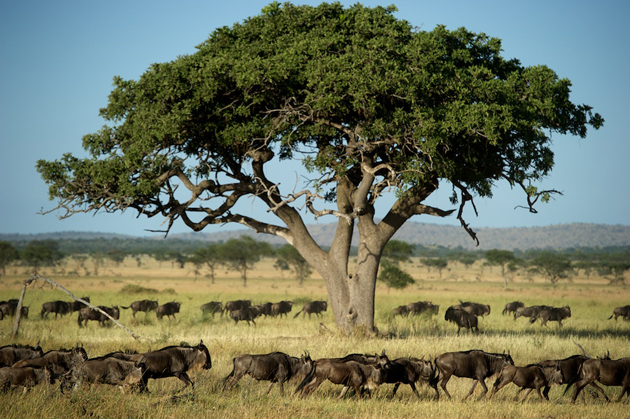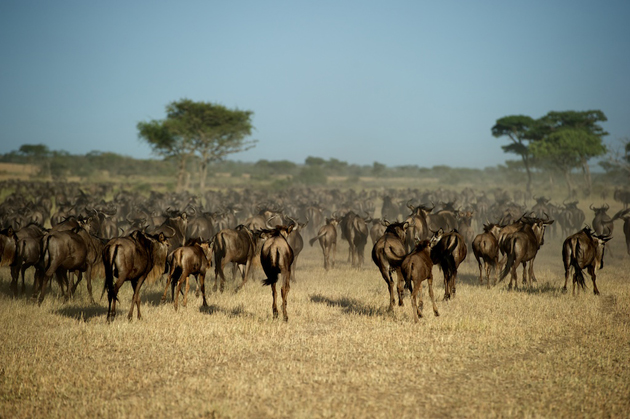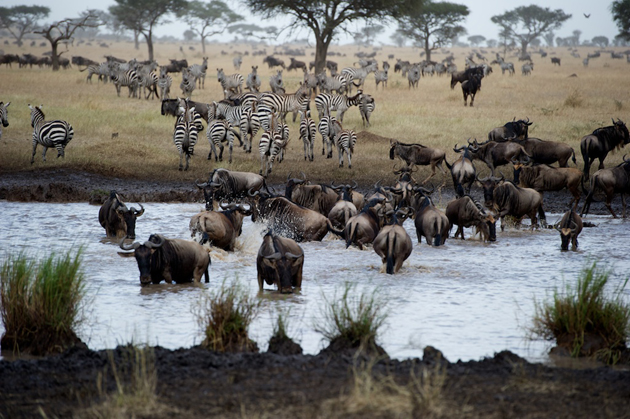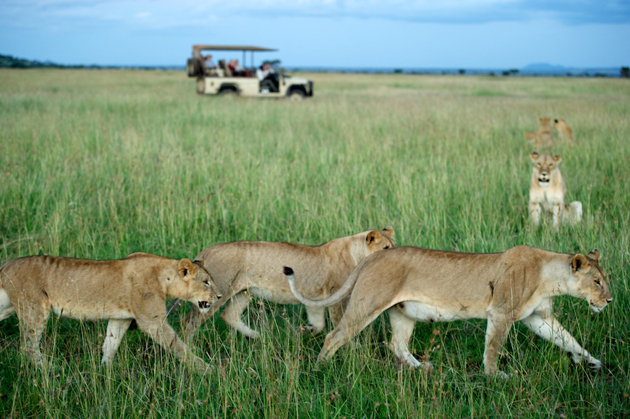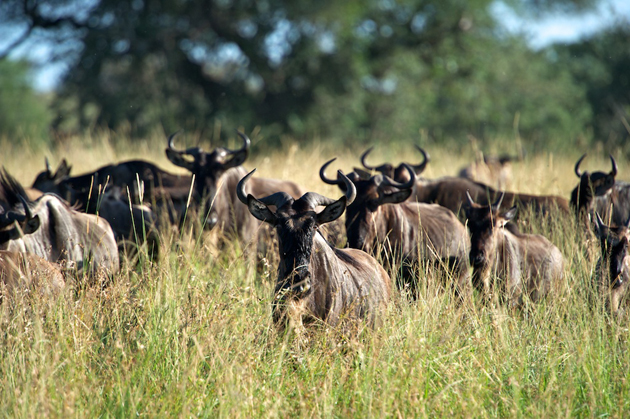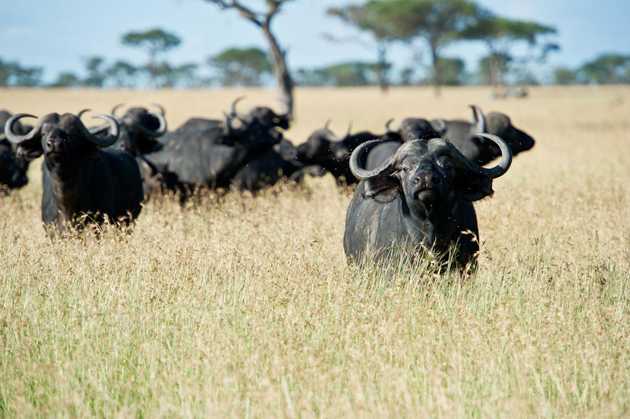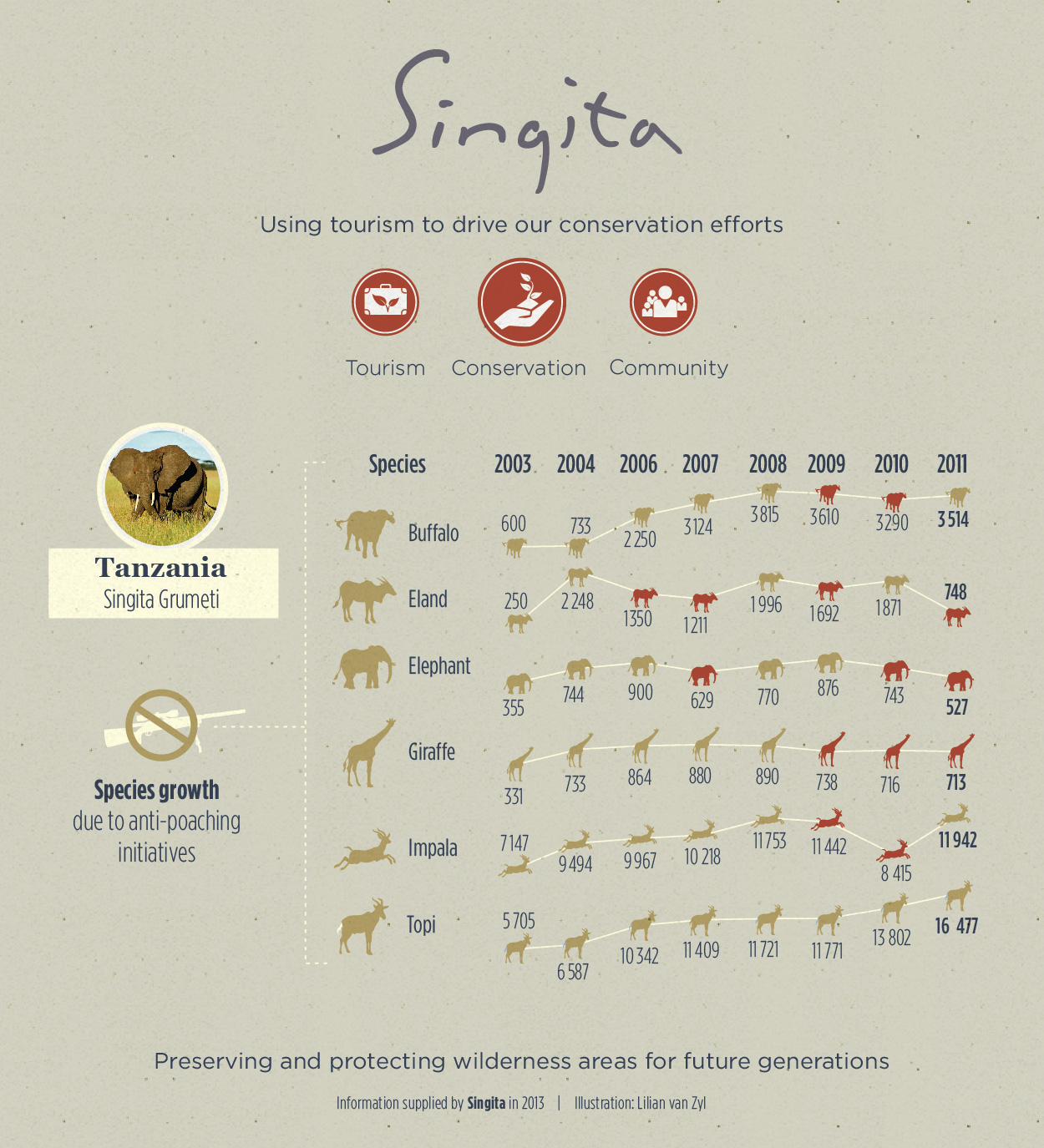Wildlife Census 2013 in Tanzania
Conservation has always been pivotal to Singita’s existence, as it lives hand-in-hand with Singita’s other two operating principles; ecotourism and community development. We believe it’s the responsible way to maintain and extend the sustainability of the reserves under our care. As we reflect on the successes of the past year, it seems fitting to report on the positive findings of a recent census that took place at Singita Grumeti earlier in 2013.
The hands-on conservation teams on each property are committed to protecting, maintaining and enhancing the land and its fauna and flora. For example, Singita Grumeti has as one of its goals the rehabilitation of the wildlife populations of Grumeti and Ikorongo Game Reserves and associated wildlife management areas in the Serengeti, Tanzania. Over the last eight years, Singita Grumeti has made a significant investment into the protection of wildlife in the area as well as the infrastructure required to support ecotourism. The effectiveness of these inputs and the management activities that result need to be monitored for appropriate outcomes, the most logical of which is the change in status of the resident herbivores.
Having an understanding of the number of animals, their distribution and numerical trends forms one of the most basic sets of information necessary for the informed management of a wildlife operation. A starting point is a regular and accurate assessment of population size of possibly all, but certainly the ecologically and economically most important species.
A census was therefore undertaken by way of an aerial survey between the 23rd of August and the 3rd of September 2013 in the Ikorongo-Grumeti Reserves complex. This survey was the tenth undertaken over a period of 11 years, under particularly favourable counting conditions and with a very experienced team of enumerators.
At the initiation of this project, the Grumeti Fund management team’s primary purpose was to facilitate the recovery of the resident large herbivore populations in this part of the Serengeti ecosystem. This was seen as an important step in the rehabilitation of this particular region, protecting the migratory herds but also helping to fully restore the tourism potential of the area.
Notable statistics from the census include the slowing population increase of buffalo (although this species has shown a six fold increase in estimated size over the last 10 years) and this year showing the highest number of elephant in the area since inception. The population estimate for elephant has varied substantially over the last eight years, probably as a result of the animals moving in and out in response to resource availability. Overall, the population showing a gradual increase of 5% per annum over the last 10 years. In addition, the topi, a local migrant antelope, would appear to have stabilised at around 15 000 animals. Fluctuations are likely due both to forage conditions as well as predation.
Click the image below to see the full-size infographic depicting population growth until 2011:
Singita Grumeti also has a highly successful Anti-Poaching Unit comprising 120 game scouts (most of the ex-poachers) who work together with the Wildlife Division to eradicated illegal hunting within the concession. Visit our Conservation page to learn more about how Singita manages the half a million acres of pristine African wilderness that it is proud guardian of.
The post Wildlife Census 2013 in Tanzania appeared first on Singita.

